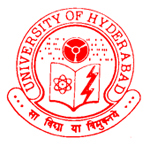Prof. Dr. Johannes Müthing
|
||
| Email: Net: |
jm@uni-muenster.de http://www.campus.uni-muenster.de/hyg_forsch_mthing.html |
|
The Glycobiology Research Group of the Institute for Hygiene (director Prof. Dr. Dr. h. c. Helge Karch) has a long-standing expertise in the development of analytical tools aimed at the structural characterization of biologically important glycosphingolipids (GSLs) and investigations on the functional impact of GSLs in human diseases. Numerous pathogenic bacteria exploit cell surface-exposed GSLs as receptors in the initiation of infectious diseases resulting in severe systemic complications. Evidence has increased that a large number of virulence factors of pathogens such as adhesins and toxins, exert cytoxtoxic effects on human epithelial cells of the gastrointestinal tract or the lung and endothelial cells of the human vasculature. Therefore, the current focus of our work group lies on the analysis of GSL-protein-interactions of pathogens and pathogen-derived determinants involved in infectious diseases. Neutral GSLs and acidic GSLs such as gangliosides (neuraminic acid containing GSLs), which localize in lipid raft microdomains of the outer leaflet of the plasma membrane, are supposed to “serve” as high-affinity receptors owing to multivalent presentation of lipid-bound oligosaccharides on the cell surface. Although carbohydrate-dependent interactions of environmentally released microbial toxins and membrane-bound bacterial adhesins as well as viral hemagglutinins have been convincingly demonstrated, the specific receptors of mammalian target cells and their assembly in microdomains of the plasma membrane are largely unknown.
We have so far extensively explored the molecular and cellular mechanisms of Shiga toxin (Stx)-mediated cell injury. Stxs are produced in the gut by enterohemorrhagic Escherichia coli (EHEC), the human pathogenic subgroup of Stx-producing Escherichia coli (STEC), traverse the epithelium and pass into the circulation, where the toxins cause vascular damage in specific target tissues, resulting in systemic complications. Stx subtypes Stx1a and/or Stx2a preferentially injure microvascular endothelial cells of the kidneys and the brain resulting in the manifestation of the hemolytic-uremic syndrome (HUS) and neurological signs in the brain, respectively. We have identified in previous projects the molecular structures of the high- and low-affinity Stx receptors globotriaosylceramide (Gb3Cer) and globotetraosylceramide (Gb4Cer), studied their structural variability and explored in detail their molecular association with lipid rafts in human endothelial cells. Recently, we identified the Forssman-GSL as a novel Stx receptor, which is specifically recognized by Stx of subtype Stx2e.
Although the impact of neuraminic acids on the infection of cells such as epithelial cells of the lung by influenza A viruses is known for a long time, there is vast need for research regarding the identification of cell-specific receptors, which might give some indication of host tropism and course of virus infections. We could show, for example, that human H3N2 influenza A viruses interact with sialyl-Lewisx-gangliosides with neolacto-series core structures (collaboration with Prof. Dr. Stephan Ludwig and PD Dr. Christina Ehrhardt). This finding indicates that beside neuraminic acid additional substituents like fucoses may be involved in binding of viral hemagglutinins and thus in influenza infection.
Cell culture technologies are used to determine Stx-caused cellular damage in vitro. In particular, transendothelial electrical resistance (TEER) measurements for online monitoring of toxin-caused cell monolayer disintegration have been recently successfully employed to demonstrate Stx-mediated injury of endothelial cells (in cooperation with Prof. Dr. Hans-Joachim Galla). Detergent-resistent membranes (DRMs) are used as equivalents of microdomains aimed at unravelling the functional requirement of GSL assembly in lipid rafts. Quantitative real-time PCR is an established procedure for expression analysis of receptor-related glycosyl- and sialyltransferases, which, for example, synthesize, globo-series neutral GSLs (Stx receptors) and α2-3- and α2-6-sialylated gangliosides (influenza A virus receptors), respectively. A newly established surface acoustic wave (SAW) biosensor is now available for real-time biomolecular interaction analysis (collaboration with Dr. Michael Mormann). Last not least we have produced a huge collection of well characterized reference neutral GSLs and gangliosides of human and animal origin as well as monoclonal and polyclonal carbohydrate-specific antibodies, which are extremely helpful for receptor studies.
Thin-layer chromatography (TLC) overlay assay using GSL-specific antibodies and/or GSL-binding toxins/lectins combined with ESI-Q-TOF (electrospray ionization quadrupole time-of-flight) and IR-MALDI (infrared matrix-assisted laser desorption ionization time-of-flight) mass spectrometry strategies are the methods of choice for the identification of GSL receptors in lipid extracts prepared from mammalian cells. The Glycobiology Research Group closely cooperates with the work group of Prof. Dr. Klaus Dreisewerd (Biomedical Mass Spectrometry) using state-of-the-art mass spectrometric MALDI-TOF MS (SYNAPT G2 HDMS) and ESI-Q-TOF MS technologies (Dr. Michael Mormann).
Collectively, the identification of the native GSL receptors, proof of GSL assembly in plasma membrane microdomains and the functional impact of GSLs in host-pathogen interaction will further our understanding on the molecular and cellular processes that underly the onset of infectious diseases. Therefore, exploring the initial host-pathogen interaction mechanisms may help to develop antiadhesion therapeutics to emeliorate or prevent pathogen infections.
Techniques, materials and expertise provided
- cell culture technology (mammalian cells)
- cytotoxicity assays for determing toxin-mediated cellular damage
- real-time PCR of glycosyltransferases
- isolation and purification of GSLs from in vitro grown cells and organs, tissues, etc.
- real-time biomolecular interaction analysis
- anti-GSL monoclonal and polyclonal antibodies
- ESI-Q-TOF and IR-MALDI MS analyses of GSLs



